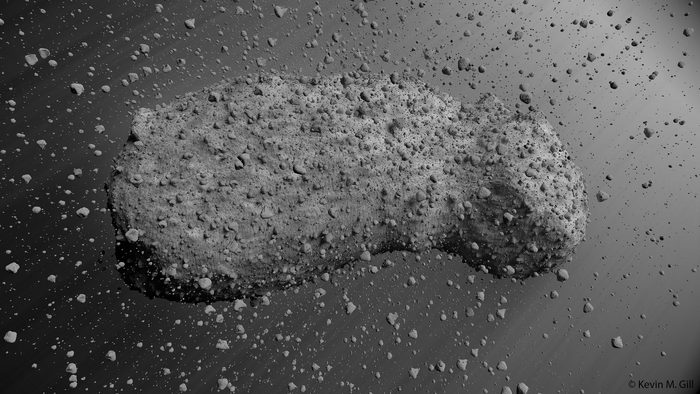
Recent surveys of the composition of an asteroid as old as our solar system has revealed a key strength that humanity must work around if it should ever need to defend our planet from a possible impact.
“Rubble pile” asteroids are immune to impact weaponry, the study revealed, and shows that instead planetary defense programs must focus on shockwaves that move them off course.
We’ve entered into the age of planetary defense. Recent NASA budgets have allowed it to create a Planetary Defense directorate, and the administration has proven it can divert the course of potentially-destructive asteroids with the success of its recent DART mission.
Courtesy of the Japanese space agency JAXA, and their Hayabusa 1 mission that sampled an ancient asteroid called Itokawa, an international team at John Curtin University, Australia was able to determine that asteroids can live for billions of years despite being formed very loosely.
Itokawa is about 1.2 million miles from Earth, and about the size of the Sydney Harbor Bridge. But it isn’t its size that gives it durability, but rather its composition.
“Unlike monolithic asteroids, Itokawa is not a single lump of rock, but belongs to the rubble pile family which means it’s entirely made of loose boulders and rocks, with almost half of it being empty space,” lead author Professor Fred Jourdan, Director of the Western Australian Argon Isotope Facility, Curtin Univ.
“The survival time of monolithic asteroids the size of Itokawa is predicted to be only several hundreds of thousands of years in the asteroid belt.”
MORE ON ASTEROIDS: NASA Celebrates World First: Smashing a Spacecraft into an Asteroid to Practice Saving Humanity
“The huge impact that destroyed Itokawa’s monolithic parent asteroid and formed Itokawa happened at least 4.2 billion years ago. Such an astonishingly long survival time for an asteroid the size of Itokawa is attributed to the shock-absorbent nature of rubble pile material.”
Like Rocky Marciano, Itokawa has endured countless impacts but is still standing. To wit, Professor Jourdan called it a “space cushion.”
The team’s self-stated goal was to figure out if rubble pile asteroids could be blown to dust at the slightest knock because of their loose composition. On the contrary, their cushioned surfaces allows them to absorb impact forces, and so the team estimates that the number of rubble pile asteroids in the asteroid belt must be much higher than previously thought, and that any future Earth-endangering asteroids will probably be rubble piles.
RELATED: Work Set to Begin on Asteroid Hunting Observatory—NASA’s New Mission to Protect Earth from Disaster
The good news is that this informs how we might save ourselves in the future from being crushed by one—a close-by nuclear explosion, detonated near, but not on, the asteroid, to send it flying away from a collision course with Earth.
Their paper was published in the Proceedings of the National Academy of Sciences, entitled “Rubble Pile Asteroids are Forever.”
There are no currently-known asteroids that threaten Earth, but geology teaches us we’ve been hit countless times, and occasionally with curtain-closing consequences.
SHARE This Cool Random Space Fact With Your Friends On Social Media…



















